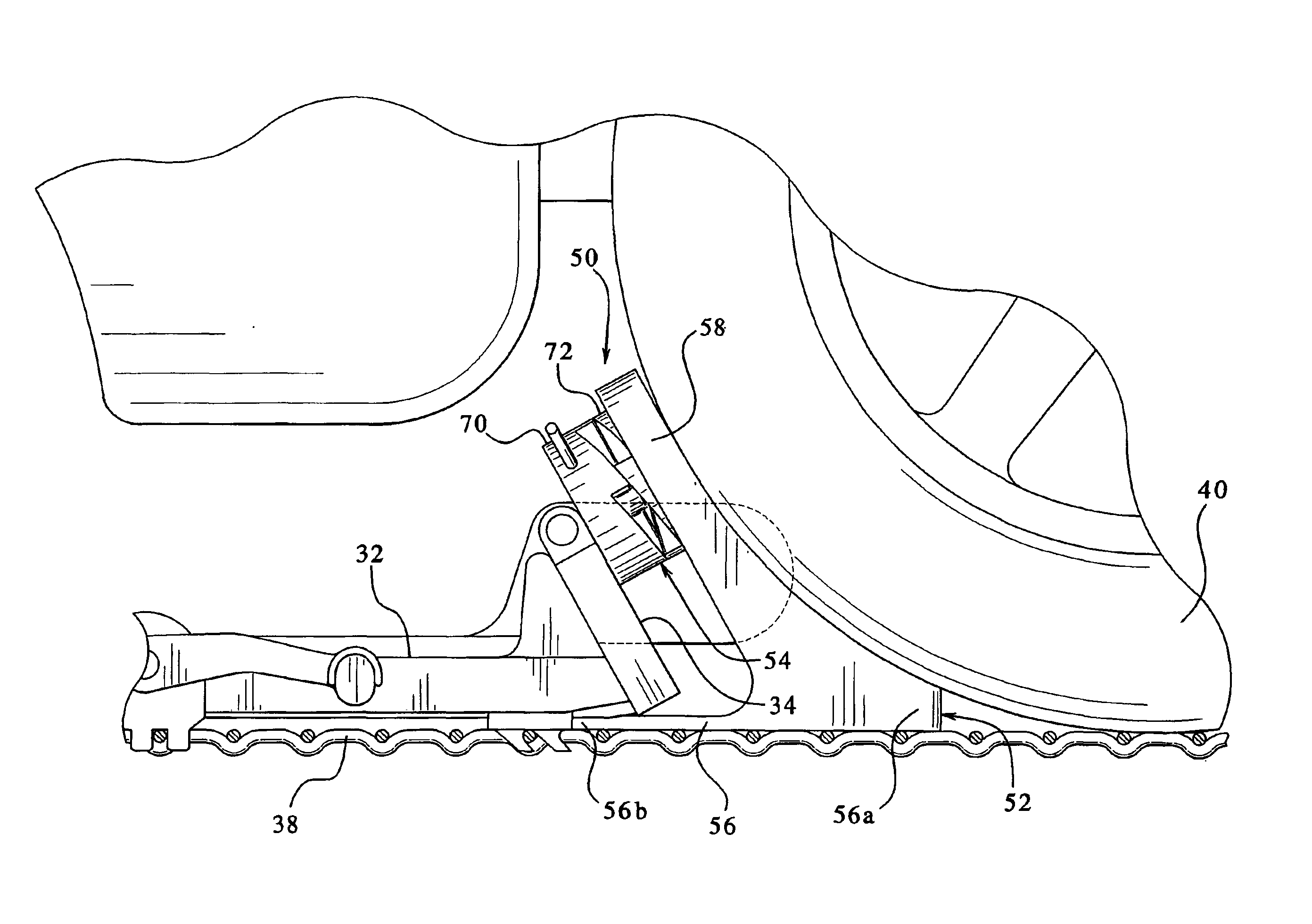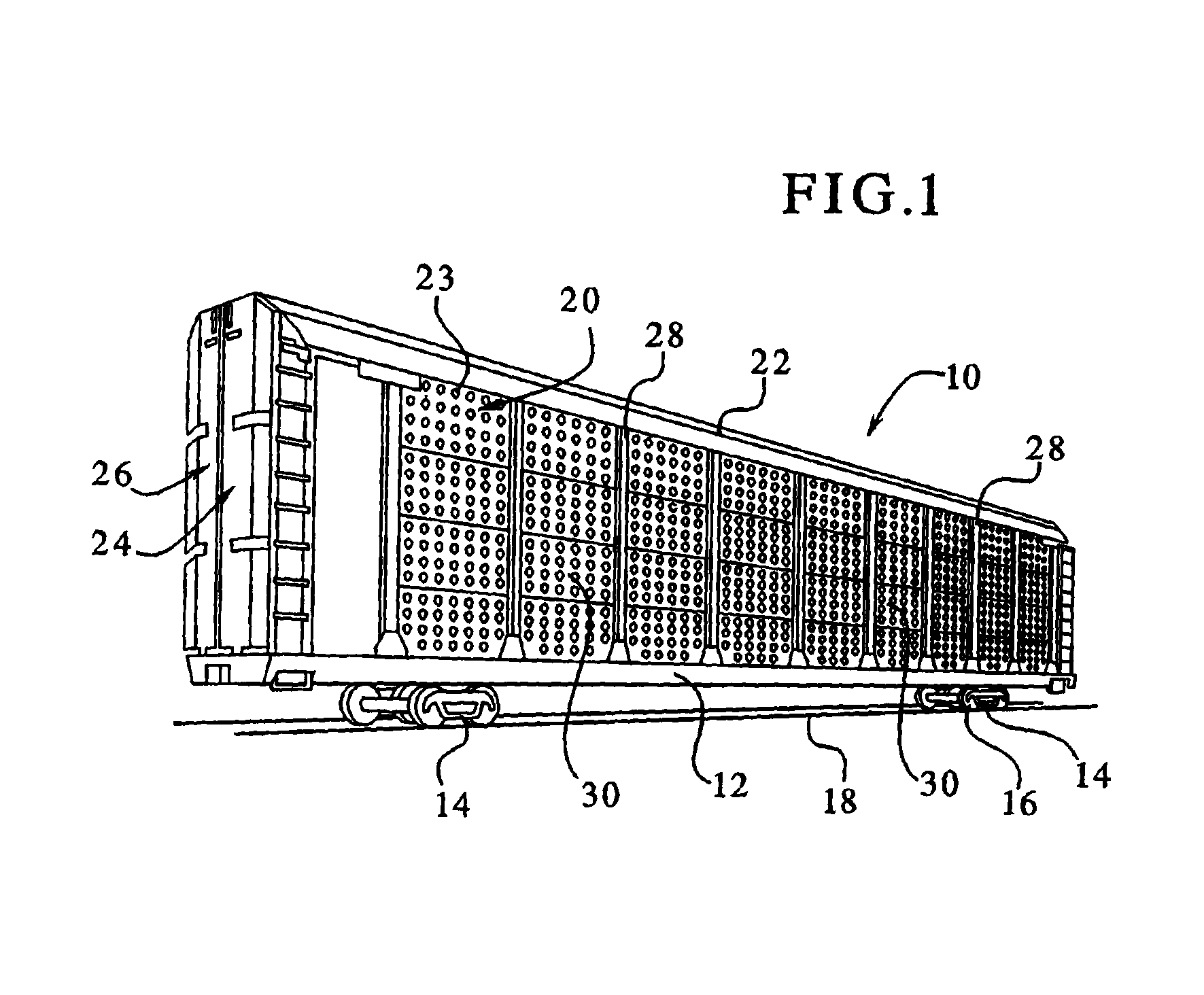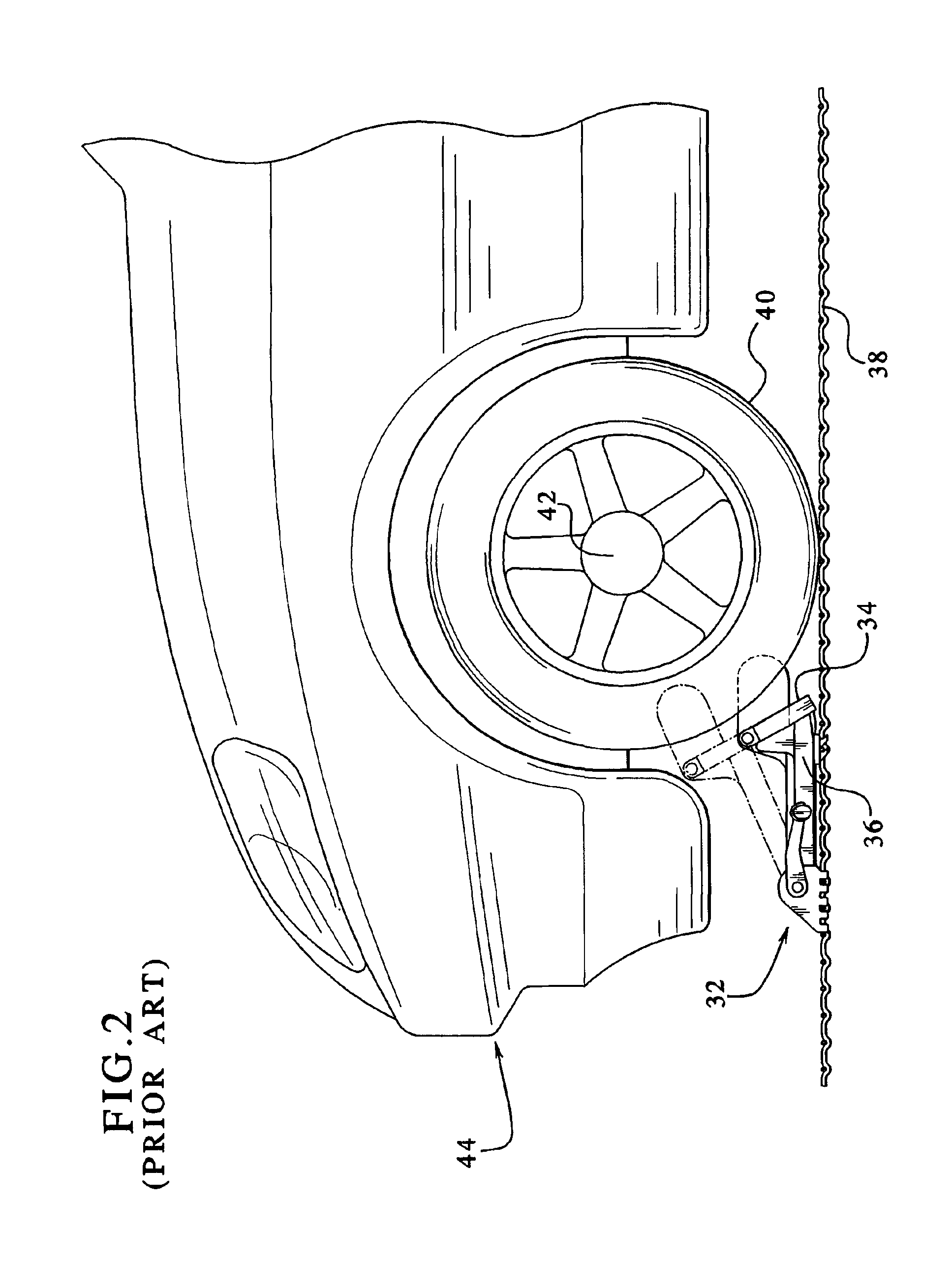Supplemental restraint for auto-rack railroad car restraint system
a technology for auto-rack cars and restraint systems, which is applied in the direction of braking systems, load securing, transportation items, etc., can solve the problems of affecting the restraint system, the potential damage of newly-manufactured vehicles in the auto-rack car, and the development of new types of vehicles
- Summary
- Abstract
- Description
- Claims
- Application Information
AI Technical Summary
Benefits of technology
Problems solved by technology
Method used
Image
Examples
Embodiment Construction
[0040]Referring now to the drawings, and, particularly, to FIG. 1, a typical auto-rack railroad car 10 includes a frame 12 supported by trucks 14, each of which have several wheels 16 which roll along railroad tracks 18. The frame 12 supports two sidewalls 20 and a roof 22. The auto-rack car 10 includes a pair of co-acting clamshell doors 24 and 26 mounted on each end of the auto-rack car 10. The doors 24 and 26 are opened to facilitate the loading and unloading of vehicles into and out of the auto-rack car 10 and are closed during transport or storage of the vehicles.
[0041]The sidewalls 20 include a series of steel vertical posts 28 which are mounted on, and extend upwardly from, the frame 12. The roof 22 is mounted on, and supported by, these vertical posts. The vertical posts are evenly spaced along the entire length of both sidewalls 20 of the auto-rack car 10. A plurality of rectangular galvanized steel side wall panels 30 which extend horizontally and are vertically spaced apa...
PUM
 Login to View More
Login to View More Abstract
Description
Claims
Application Information
 Login to View More
Login to View More - R&D
- Intellectual Property
- Life Sciences
- Materials
- Tech Scout
- Unparalleled Data Quality
- Higher Quality Content
- 60% Fewer Hallucinations
Browse by: Latest US Patents, China's latest patents, Technical Efficacy Thesaurus, Application Domain, Technology Topic, Popular Technical Reports.
© 2025 PatSnap. All rights reserved.Legal|Privacy policy|Modern Slavery Act Transparency Statement|Sitemap|About US| Contact US: help@patsnap.com



